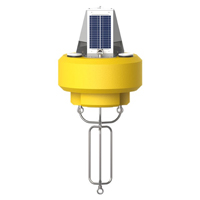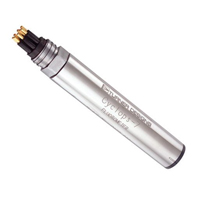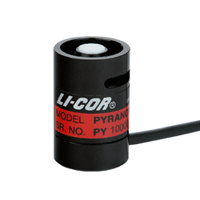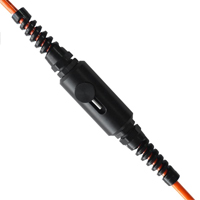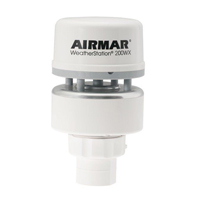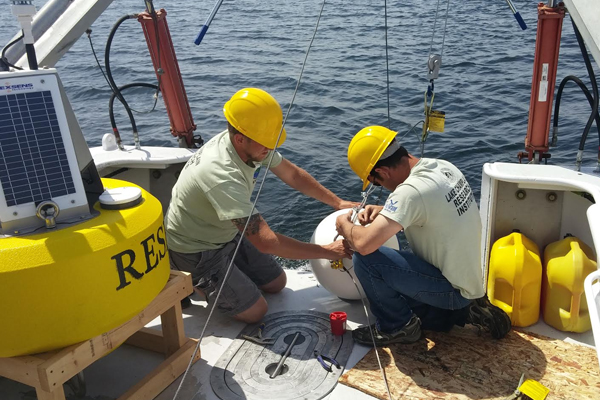 Beginning in the 1990s, researchers have collected samples manually every few weeks on trips to Lake Champlain to gather data on its dynamics. But the metrics the team has collected are spotty, considering the faster-paced changes fueled by a changing climate.
Beginning in the 1990s, researchers have collected samples manually every few weeks on trips to Lake Champlain to gather data on its dynamics. But the metrics the team has collected are spotty, considering the faster-paced changes fueled by a changing climate.
To help fill in those holes, researchers from the State University of New York (SUNY)—Plattsburgh deployed a cellular data buoy in the lake near Valcour Island. The buoy is providing previously unavailable data in real-time, helping research and education at the university, improving National Weather Service forecasts, and keeping local fishermen a little safer.
Challenge: Monitoring the entire thermocline in real-time
Previous attempts to monitor Lake Champlain’s thermocline only reached from six meters beneath the surface to the sediments—but the available data reveal that the lake experiences extreme fluctuations at times due to an active seiche and wind.
“One of the things we’re looking at is whether or not the monitoring we’re doing on Lake Champlain is adequate enough to pick up climate change,” said Eric Leibensperger, assistant professor of environmental science at the university. “Another aspect is that we don’t have that much open-lake buoy data.”
Solution: Deep dive data
The NexSens team worked with the SUNY—Plattsburgh researchers to determine the best way to handle this challenge and its pain points:
- a need for more real-time lake data given quickly changing conditions
- a difficult zooplankton research question that needed to be answered
- a need to monitor the entire thermocline and provide data in real-time
- a need to share data online, quickly, with all stakeholders, including public safety officials
The right choice for this challenge was the NexSens CB-450 data buoy. It has enough net-buoyancy to handle the open water location, which allows the team to track how the thermocline changes from a prime spot.
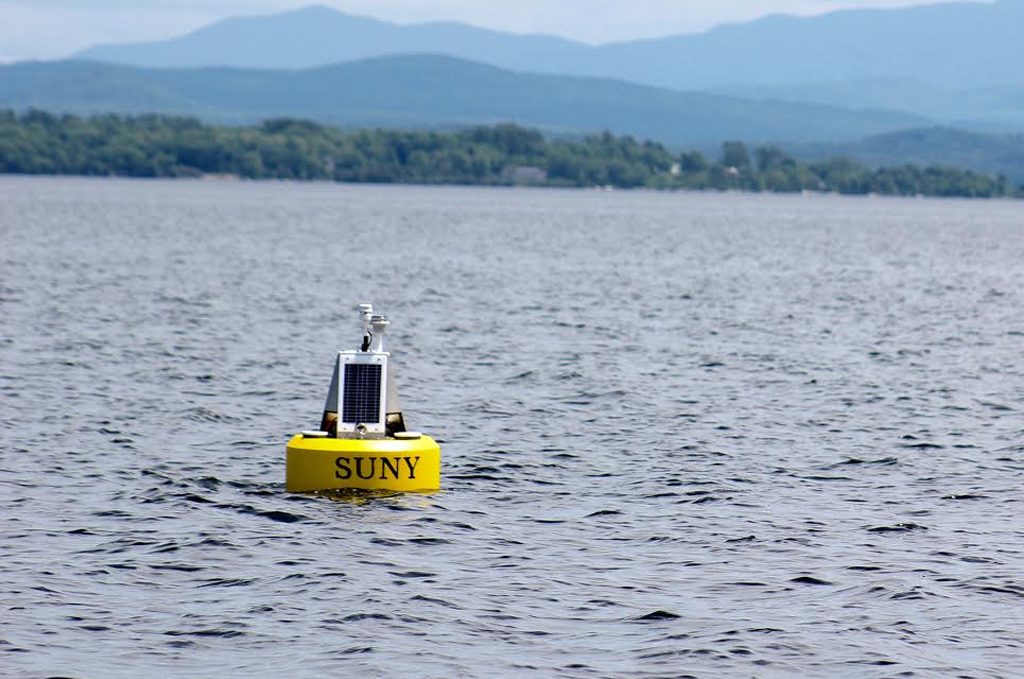
The team uses a NexSens TS210 thermistor string for this task. At 50 meters long, it handles the entire length of the thermocline, from the water’s surface all the way down to the sediments. The team also uses a Turner Designs chlorophyll sensor to collect additional data on the water quality.
Finally, the researchers selected an Airmar 200WX weather station to gather wind direction and speed as well as air temperature and barometric pressure data.
Benefits: Rapid changes, notable extremes
All of these new data assist the team’s ongoing zooplankton movement dynamics investigation.
“In a particularly windy storm, the thermocline can mix—right now it’s around 13 to 15 meters—but it fluctuates a lot, on the order of 20 to 30 meters,” said Leibensperger, comparing what’s going on now to the previous effort that relied on a marker buoy and the short thermistor string. “We have the weather measurements, so now we can relate those changes in wind speed to changes in the thermocline depth.”
Now, researchers can take advantage of new educational opportunities. They can also compare buoy data with data they collect periodically using plankton nets at both ends of the thermocline.
“The zooplankton move up and down to find food and hide from predators. We can look at the depth of the thermocline and relate it to those biological samples we’re extracting,” said Leibensperger. “The buoy is also close enough to our boathouse so we can take classes out.”
Result: Better outcomes for more stakeholders
Measurements from the NexSens CB-450 lake data buoy are also helping National Weather Service (NWS). NWS forecasters lacked sufficient data on water temperatures, air temperatures, and wind speed to calibrate their models before. Improved forecasts mean safer fishermen and boaters who face less uncertainty on the water.
“I see it as a win-win-win situation. We use it for research purposes as well as lake management. It helps the NWS, but also aids public safety,” said Leibensperger. “Data are used a lot by local anglers. Local fishermen regularly visit our website to see conditions on the lake. We’ve had success in reaching a lot of different people.”
The data is available online, and this open accessibility is a new advance for the lake and its researchers.
“It’s kind of in that region where it’s well studied and not well studied at the same time,” said Leibensperger. “We could use a lot more data than we have.”
The team plans to upgrade the weather sensor to collect data on humidity and solar radiation. Understanding these parameters may allow them to develop the lake’s energy budget.
The bottom line
A real understanding of a complex lake system takes better data—especially when the lake’s thermocline changes rapidly. Either you have the essential data on the thermocline and lake dynamics that you need, or you don’t.
Lake data buoys from NexSens are custom-built for every project. Our team of experts works with you to help you determine which custom environmental monitoring solution can solve your challenge. We’d love to speak to you about your data today, so reach out anytime.
Equipment
The NexSens CB-450 Data Buoy is designed for deployment in lakes, rivers, coastal waters, harbors, estuaries and other freshwater or marine environments.
The Cyclops-7F submersible sensor is a high performance and compact fluorometer designed for integration into any platform that supplies power and data logging.
The LI‑200R Pyranometer measures total solar radiation. In outdoor sky conditions, the LI‑200R performs comparably to first-class thermopile pyranometers.
The NexSens TS210 Thermistor String provides high precision temperature measurements for profiling in lakes, streams, and coastal waters.
The Airmar 200XW-IPX7 is a more robust weather sensor option to meet the operational challenges of harsh open water environments.

